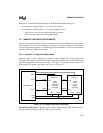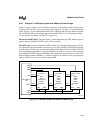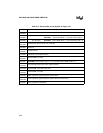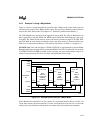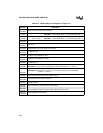
5-25
MEMORY PARTITIONS
5.5.3 Code Fetches in the 1-Mbyte Mode
CCR1.1 (the MODE64 bit) controls whether the device operates in 1-Mbyte or 64-Kbyte mode.
CCR1 is loaded with the contents of CCB1 at reset. When MODE64 is clear, the device operates
in 1-Mbyte mode. In this mode, code can execute from any page in the 1-Mbyte address space.
An extended jump, branch, or call instruction across pages changes the EPC value to the destina-
tion page. For example, assume that code is executing from page FFH. The following code seg-
ment branches to an external memory location in page 00H and continues execution.
0FF2090H: LD TEMP,#12H ; code executing in page FFH
ST TEMP,PORT1 ; code executing in page FFH
EBR 003000H ; jump to location 3000H in page 00H
003000H: ADD TEMP,#50H ; code executing in page 00H
Code fetches are from external memory or internal memory, depending on the device, the instruc-
tion address, and the value of the EA# input.
80C196NU:
Code executes from any page in external memory.
80C196NP:
For devices without internal nonvolatile memory, EA# must be tied low, and code executes from
any page in external memory.
83C196NP:
Code in all locations except FF2000–FF2FFFH executes from external memory.
Instruction fetches from FF2000–FF2FFFH are controlled by the EA# input:
• If EA# is low, code executes from external memory.
• If EA# is high, code executes from internal ROM.
Note that the EA# input functions only for the address range FF2000–FF2FFFH.
5.5.4 Code Fetches in the 64-Kbyte Mode
CCR1.1 (the MODE64 bit) controls whether the device operates in 1-Mbyte or 64-Kbyte mode.
CCR1 is loaded with the contents of CCB1 at reset. When MODE64 is set, the device operates in
64-Kbyte mode. In this mode, the EPC (Figure 5-7 on page 5-23) is fixed at FFH, which allows
instructions to execute from page FFH only. Extended jump, branch, and call instructions do not
function in the 64-Kbyte mode.













